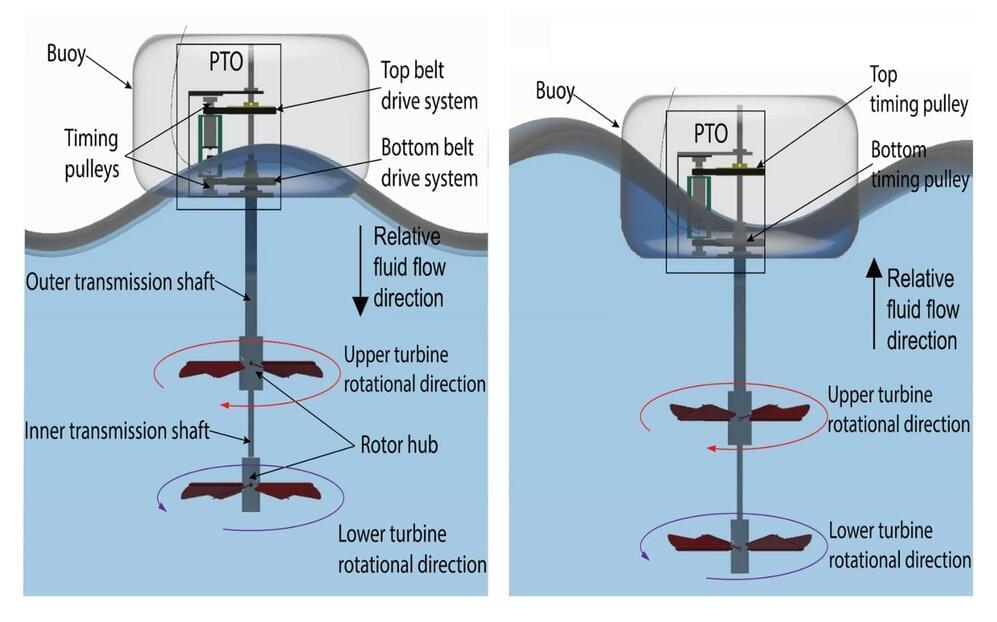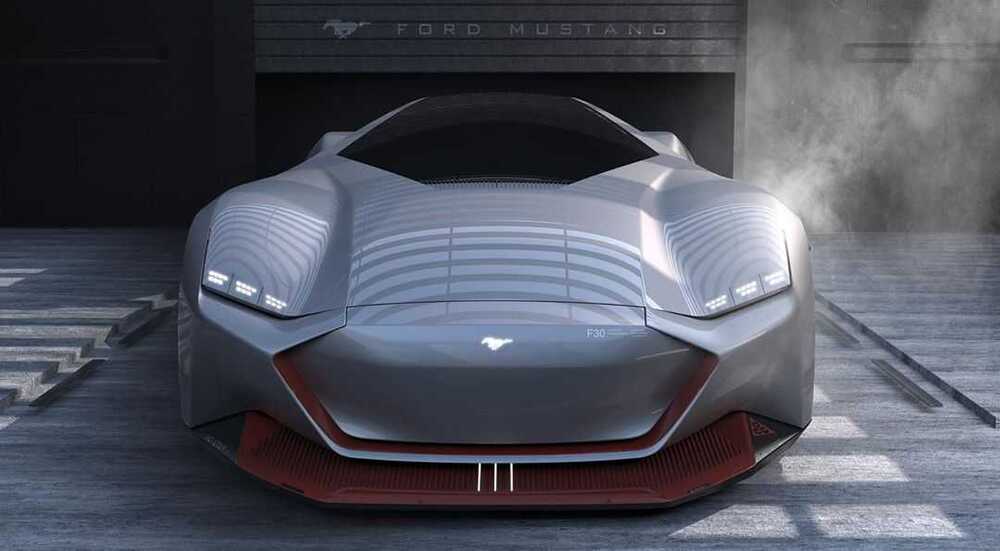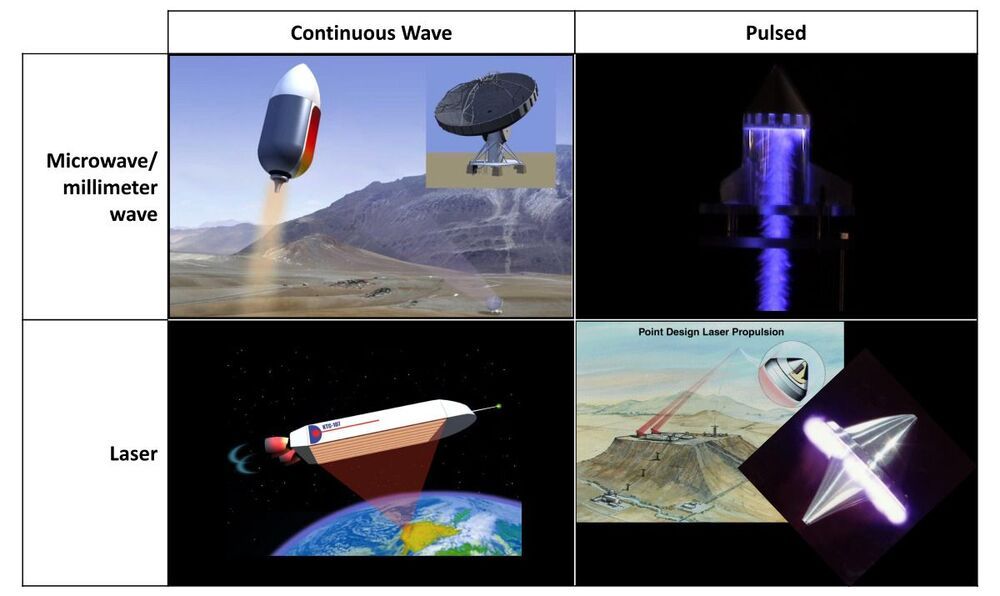FUSION BREAKEVEN ACHEIVED FOR FIRST TIME:
A tiny pellet of deuterium and tritium released more energy than it absorbed from the National Ignition Facility’s bank of 192 lasers.


Researchers have developed prototype technology that can double the power harvested from ocean waves, in an advance that could finally make wave energy a viable renewable alternative.
The untapped potential of ocean wave energy is vast—it has been estimated that the power of coastal waves around the world each year is equivalent to annual global electricity production.
But the challenges of developing technologies that can efficiently extract that natural power and withstand the harsh ocean environment have kept wave energy stuck at experimental stage.

Despite strong support from the FAA, the airline industry, and aerospace companies, the U.S. Senate ceased funding the development of a supersonic airliner in 1971. Two years later, the FAA banned supersonic flight over land, a prohibition that remains to this day.
The Concorde went on to serve various destinations, including some in the United States, flying at supersonic speeds only over water. That continued until 2,003 when British Airways and Air France retired their fleets, together amounting to just 12 aircraft. (Fourteen production aircraft were manufactured, but one was scrapped in 1,994 and another crashed in 2000.)
While the Concorde successfully overcame the technical hurdles standing in the way of supersonic passenger service, it succumbed to economics: The cost of fuel and maintenance was especially high for these planes. A new generation of aeronautical engineers and entrepreneurs are, however, keen to once again take on the technical, environmental, and economic challenges.
Using hydrogen for transportation is criticized by many. It would not be as energy-efficient as batteries, and a recent study even pointed out that producing it can be more pollutant than just burning the natural gas from where it is extracted. One of the main hurdles involving it is storage: putting the gas in a tank demands a lot of energy. E for Electric discovered a “solid-state hydrogen fueling” thanks to Sandy Munro and told us more about Plasma Kinetics, the company that developed it.

Engineers at the University of Pennsylvania have found a new way to build and package microbatteries that drastically improve energy and power density even at the smallest sizes. They developed a new kind of current collector and cathode that increases the fraction of materials that store energy while simultaneously serving as a protective shell. This reduces the need for non-conductive packaging that normally protects a battery’s sensitive internal chemicals.
It weighs the same as two grains of rice but has the energy density of a much larger, heavier battery.
Three scientists on Tuesday won the Nobel Physics Prize, including the first woman to receive the prestigious award in 55 years, for inventing Chirped-pulse amplification, or CPA. The 9-million-Swedish-kronor award (about $1 million) will be doled out to Arthur Ashkin of Bell Laboratories in Holmdel, N.J., Gérard Mourou of École Polytechnique in Palaiseau, France, and Donna Strickland of the University of Waterloo in Canada. This is a technique for creating ultrashort, yet extremely high-energy laser pulses necessary in a variety of applications. It is remarkable what can be achieved with lasers in research and in applications, and there are many good reasons for it, including their coherence, frequency stability, and controllability, but for some applications, the thing that really matters is raw power. Article by Dr. Olivier Alirol, Physicist, Resonance Science Foundation Research Scientist.

Although we expect the Ford Mustang Mach-E will be a hit, the reality that Ford emblazoned its all-electric crossover with a pony logo and the historic Mustang brand has turned off many fanatics. The answer is still out on whether the Mach-E will be a long-term plus or bad for the Mustang. Lichen Zhang, who regularly shares some cool-looking vehicle designs, has created this futuristic Ford Mustang EV. As a result, this design lacks the classic style we’ve come to anticipate from Mustangs in previous generations, while there are some clues of the past, notably in the front end. With a steeply sloped roof, huge haunches, and the kind of visage that reinforces the idea it’s after our lunch money, this 2,030 Ford Mustang EV “prototype” is surely a head-turner. The shape has a prominent beltline that leads to a somewhat narrow cockpit, making it difficult to seat two people side by side. Moreover, the rear end features an entirely new take on the Mustang’s renowned tri-bar taillights, which appear as if a wild animal has just scratched them somewhat. Nonetheless, this futuristic 2,030 Ford Mustang EV drawing signals a whole new trend in Mustang aesthetics, and we have to question if it’s a viable possibility. Anything is possible, considering The Blue Oval’s bravery in calling a battery-electric crossover a Mustang and the intrepid design of the current, third-gen Ford GT.Returning to reality for a moment, there is already a Ford Mustang EV in the form of the Mach-E, and we’re convinced that a hybrid will follow in the coming years. The hybrid, which will appear with the next-generation Mustang in 2,023 will, nevertheless, probably dominate much, if not all, of its gas-powered sibling’s appearance. We wouldn’t count out a major shift in automobile design as the industry switches to battery electric power.

Parkin Research.
MICROWAVE THERMAL ROCKETS
AND
LASER THERMAL ROCKETS
Traditional rockets are marginal at launching things into orbit. Their chemical propellants do not carry enough energy (in the form of chemical bonds) to accelerate their own mass to orbit, let alone a tank and payload on top of that. As well as expelling propellant, traditional rockets also have to jettison parts (stages) as they ascend. The payload that is finally released into orbit is a tiny fraction of the rocket that lifts off from the ground.

Seeing the environmental crises rising particularly because of the construction sector, more conscious choices regarding building materials need to be considered. Since the beginning of our craft, architects and constructors have been trying to utilize natural materials in buildings—either used in their raw form, like bamboo, or processed and incorporated into different materials. Hempcrete is one type of concrete incorporating natural materials; it is energy-saving and durable.
